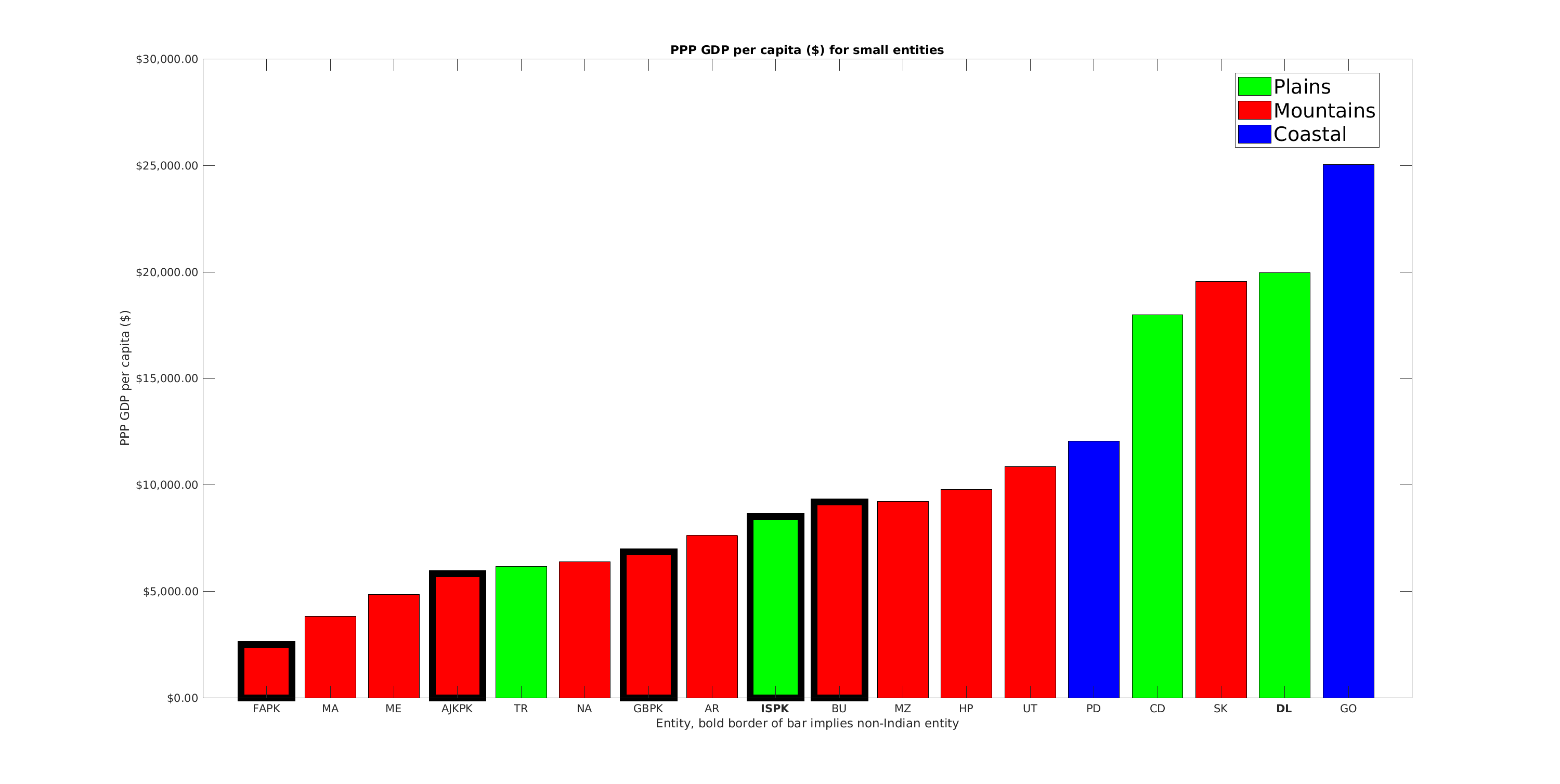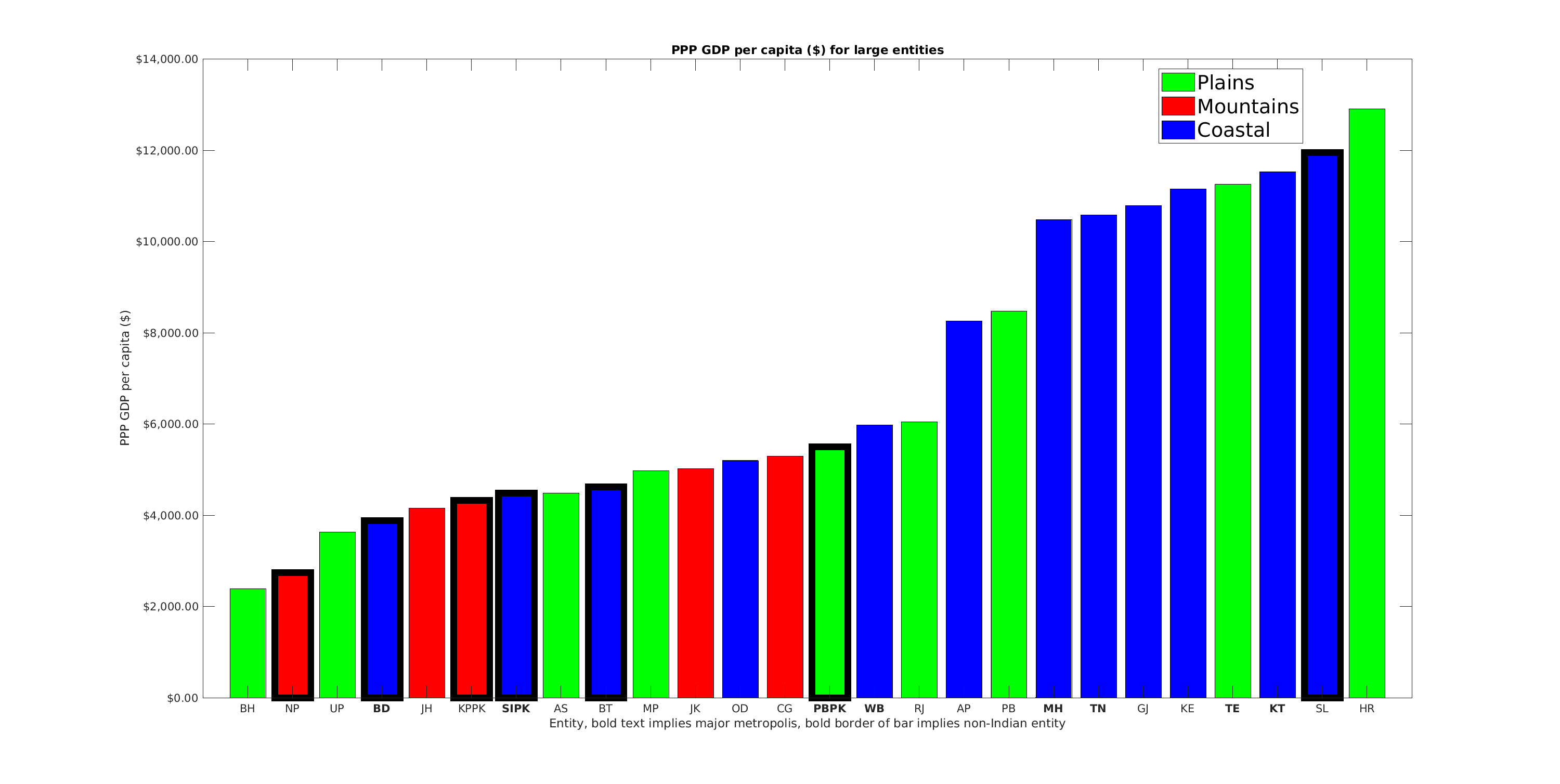Do state capacity and policy really matter when it comes to wealth among regions in South Asia ? Or is prosperity today determined largely by a mixture of geographical and historical factors ? South Asia as a unit is a reasonable region to study because the introduction to modernity in this entire region was mediated by the British Empire.
Seen in the two figures below are GDP per capita ($ PPP) figures for smaller (< 20 million population) and larger (> 20 million population) regions. The entities include the nations of Bhutan, Nepal, Bangladesh and Sri Lanka, states and union territories of India, and provinces of Pakistan. Some notes about the two figures:
- Green bars denote plains regions, red mountain regions and blue coastal regions.
- Bold x-axis labels indicate entities with major metro areas.
- Bold borders around bars indicate non-Indian entities.


There are roughly five bands of wealth we can identify:
- Rich smaller entities of India: Goa, Delhi, Sikkim and Chandigarh. These have GDPs of around $20-25000.
- Richer large entities consisting of Indian states and Sri Lanka. GDPs are around $10-12000, and these are predominantly coastal regions.
- Succesful agrarian states of India (Punjab and Andhra), mountainous states of India (HP, UT, MZ), Pakistan’s capital Islamabad, and country of Bhutan. GDPs between $8-10000.
- Interior Indian states and Odisha, along with all Pakistani provinces. This is the South Asian mean performance of around 4-6000$.
- Poor regions: Indian states of UP, Bihar, countries of Bangladesh, Nepal, Pakistan’s remote area of FATA and India’s remote state of Manipur.
Clearly being on the coast and having a major city help in a major way. In this context, there are three regions which are major disappointments, India’s West Bengal, Bangladesh and Pakistan’s Sindh. All three are on the coast, have major metropolitan areas and even have rich agricultural lands. But their economic performance is significantly below potential.
On the other hand, the economic star of the subcontinent is the Indian state of Haryana. It defies every convention, its not on the coast, lacks a huge metro region and lacks abundant rainfall. But it excels in every aspect of economic activity, its agricultural productivity is second only to Indian Punjab, its industries are varied and well developed and its service sector is a leader in India along with Karnataka. Gurugram hosts genuinely innovative startups, home to at least 7 of India’s 30 unicorns.
An interesting comparison is that between the state of Punjab and the Pakistani province of the same name. Indian Punjab is richer despite lacking a metro area. But there is a convergence in certain aspects. These are rich agricultural areas, with strong remittance networks but they both might lack industrial entrepreneurs.
Bihar, Nepal and Eastern UP together continue to be home to the largest concentration of poor people on planet Earth. This is an isolated region, with no major cities, neglected by every Indian political entity for many centuries now. The Modi government’s national waterway one has already connected the region upto Varanasi to the ocean, upstream will be a technological challenge. Nepal, can look to Indian states like Uttarakand and Himachal for an effective growth strategy.
Although geography and history play a major role, the example of Haryana shows that those factors can be overcome. Market access, aggregation effects and the presence of mercantile communities are the key variables that determine economic performance.